Cockapoo Vs. Labrador – What Is The Best Breed For You
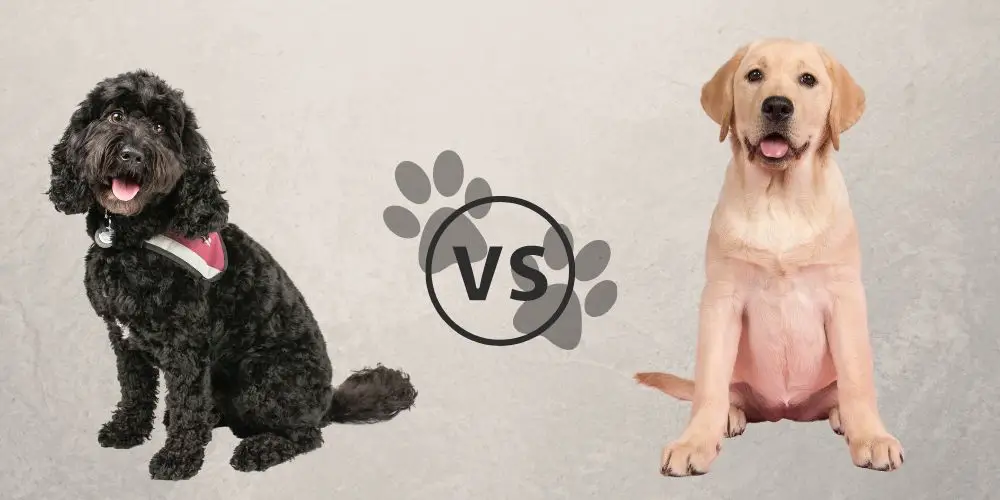
The Cockapoo is known as a designer dog and has been known since the 1950s. However, the pure-breed associations don’t recognize Cockapoos. The Labrador Retriever is a pure-bred, originated in Newfoundland and retrieved fish from the water.
Key Similarities
Both these dogs are family-oriented and affectionate. Since both breeds have long floppy ears, they are prone to ear infections and need to be cleaned frequently. Both these dogs are kid-friendly and love to play.
Key Differences
The Cockapoo is a small dog weighing between 11-25 pounds and standing at 9 to 15 inches. The Labrador is a larger dog weighing between 63 and 80 pounds and standing between 22 and 25 inches.
The Cockapoo can have a litter of puppies between 4 to 6, while the Labrador has between 5 to 10 puppies per litter.
The Cockapoo has a medium-length curly, wavy, or silky coat. On the other hand, the Labrador has a weather-resistant undercoat and a thick, short, and soft topcoat.
Pros of Owning a Cockapoo
The Cockapoo is easy to train and has low dander shedding, making these dogs perfect for allergy issues. He is a small, robust dog that’s always ready to play fetch. These dogs are energic, loving, social, and love their family.
Pros of Owning a Labrador
Labradors are very sweet and loving dogs with high energy when they’re young. They love to roam, hunt, and love the water. If you have children, this is the breed for you. Labradors are excellent companions for children, and love playing with them.
Who Should Own a Cockapoo?
Cockapoos are apartment-sized dogs and will be happy to be walked a couple times a day. They are low shedding, so dog hair isn’t too much of an issue. These dogs are affectionate, alert, curious, gentle, and independent.
A Cockapoo is a new owner friendly as well. This breed is really easy to train and eager to please its owner.
Who Should Own a Labrador?
Labradors are big dogs and need room. A house with a large, fenced yard would be perfect for keeping them happy. These dogs are gentle, cheerful, loyal, loving, and are great family dogs.
They love to be around water, so keeping them out of the pool or pond in your yard will be a problem. A Labrador is always up for a rousing game of fetch.

All About the Cockapoo
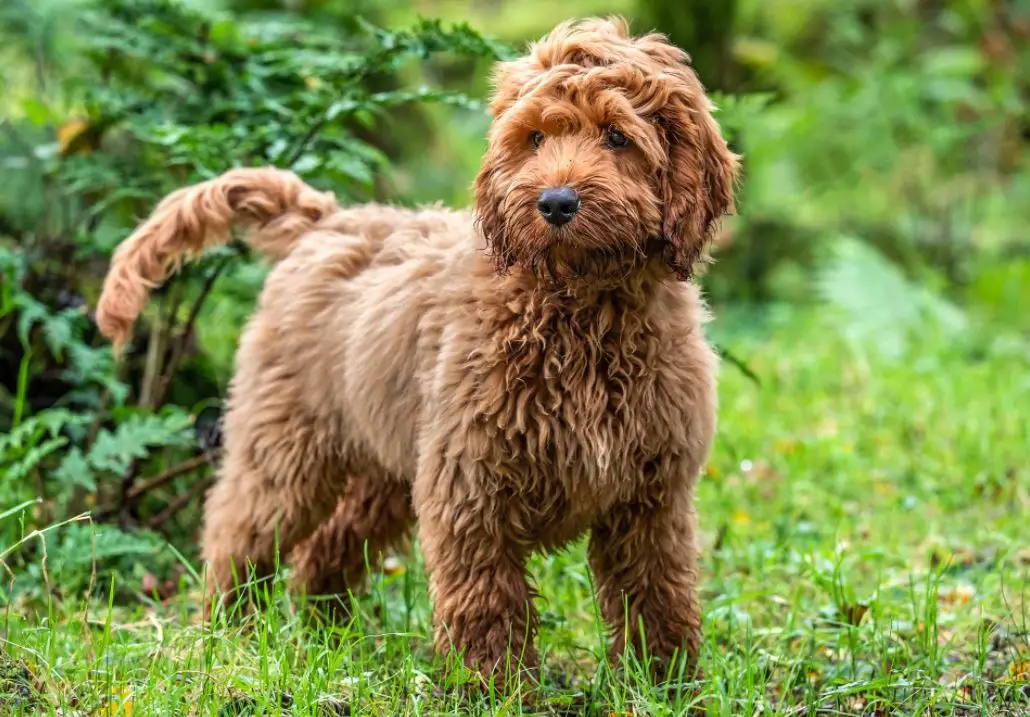
History
The Cockapoo is a hybrid mix of either a Toy or Miniature Poodle and a Cocker Spaniel. Since your dog is a crossbreed, there can be a range of diversity from the litter. However, very rarely have a litter of Cockapoos with identical size puppies and coat color.
Size & Appearance
The Cockapoo can be standard, miniature, or toy depending on the size of the Poodle parent. A standard Cockapoo can weigh a little over 20 pounds and be about 15 inches tall. Miniatures can weigh between 12 to 20 pounds and be between 11 to 14 inches. The Toy Cockapoo weighs less than 12 pounds and is no more than 10 inches tall.
The coat is a Cockapoo is similar to a poodle with the floppy ears of a Cocker Spaniel. They have large, beautiful eyes and a teddy bear-like appearance.
Lifespan
Between 14 to 20 years
Shedding, grooming, and maintenance
The Cockapoo has a coat that is long and can range from loose curls to straight. Cockapoos come in various colors and color combinations of Poodle, and Cocker Spaniels breed.
Many owners let their dog’s coat grow au natural, but some owners like to keep their dogs clipped. The coat should only be trimmed between one to two inches in length. Any hair around your dog’s eyes should be trimmed so he can see correctly. You should brush your dog’s coat daily.
Your Cockapoo should be odorless and not shed much. Your dog should only be bathed when necessary to retain the coat’s health and coat oils.
Your dog’s ears need to be checked weekly and cleaned weekly. Because his ears flop over, it blocks the circulation and will cause ear infections. Gently wipe out your dog’s ear with a cleaning solution on a cotton ball.
Only clean what you can see. If the ear smells bad, looks tender or red, or if he scratches or shakes his head frequently, then your dog may have an ear infection.

Health issues
Some of the health issues of a Cockapoo are cataracts, patellar luxation, hip dysplasia, allergies, liver disease, and ear infections.
When purchasing your puppy, the breeder should show you health clearances from the parents from Orthopedic Foundation for Animals, the Auburn University, and the Canine Eye Registry Foundation.
All About the Labrador
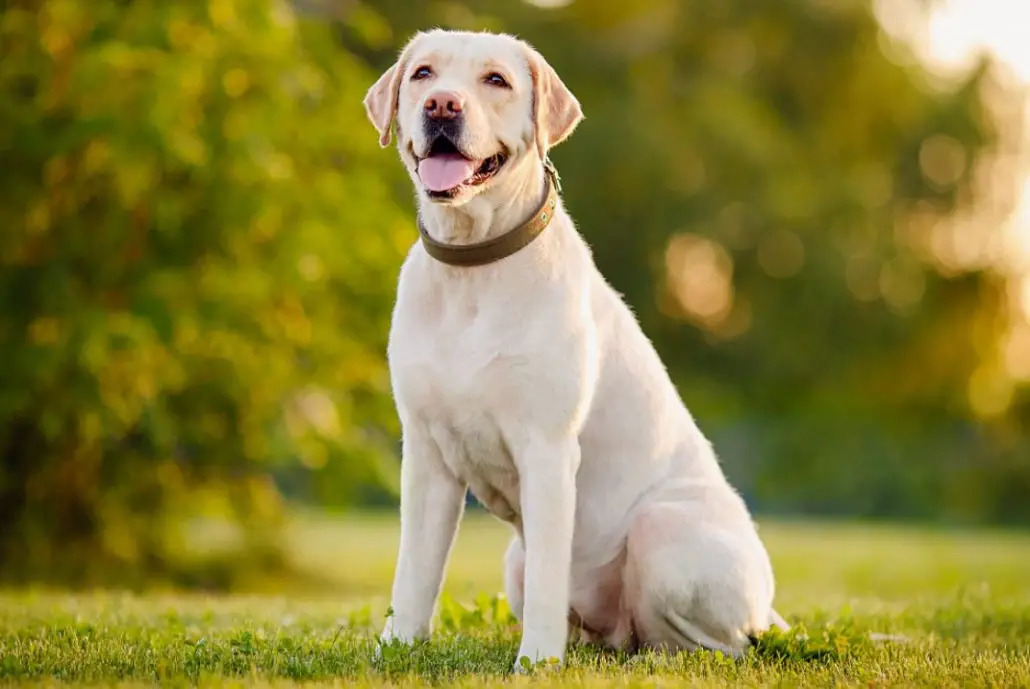
History
In the 1800s, some multipurpose dogs used by hunters in North America were shipped to England. Some of the dogs were Newfoundland types, and smaller ones were called St. John’s dogs.
In England, the breed was refined and developed into the Labrador recognized today.
Size & appearance
These are not small dogs. A Labrador Retriever will weigh between 55 and 80 pounds, with the male being 23 inches at the withers and the female being 22 inches.
The Labrador is a solid, sturdy dog with a strong body and sturdy legs. They are listed in the medium dog category, but this breed looks larger because of the sturdy build. A field line-bred dog is a little thinner in body and a bit taller.
Your Lab’s head is broad, with large expressive eyes and hanging ears. His tail is thick and sturdy and can clear off an inn table in seconds. The feet of a Labrador are webbed with more extended skin between his toes to aid in swimming.
A Labrador will reach his adult height within six to twelve months. But he won’t completely fill out until he’s two. Plus, he will still have a puppy attitude until he’s almost three.
Lifespan
The life span is between 12 to 14 years.
Guard dog or Family
Labradors will protect their families, giving an alert bark when someone is at the door. But in the same respect, they can knock the person down with their enthusiastic greeting at the door.
Shedding, grooming, and maintenance
Your Retriever has a short, dense coat that doesn’t get matted or tangled. You actually only have to bathe your dog a couple times of the year. But this breed does enjoy rolling around in the mud, plunging into any water he can find, and getting into questionable messes. When this happens, you will want to bathe him.
These dogs are notorious for shedding everywhere because of their double coat. Therefore, you will need to brush your dog daily, or you will be vacuuming every day. Plus, when you brush your dog every day, it helps spread the natural oils through his coat, leaving a healthy shine.
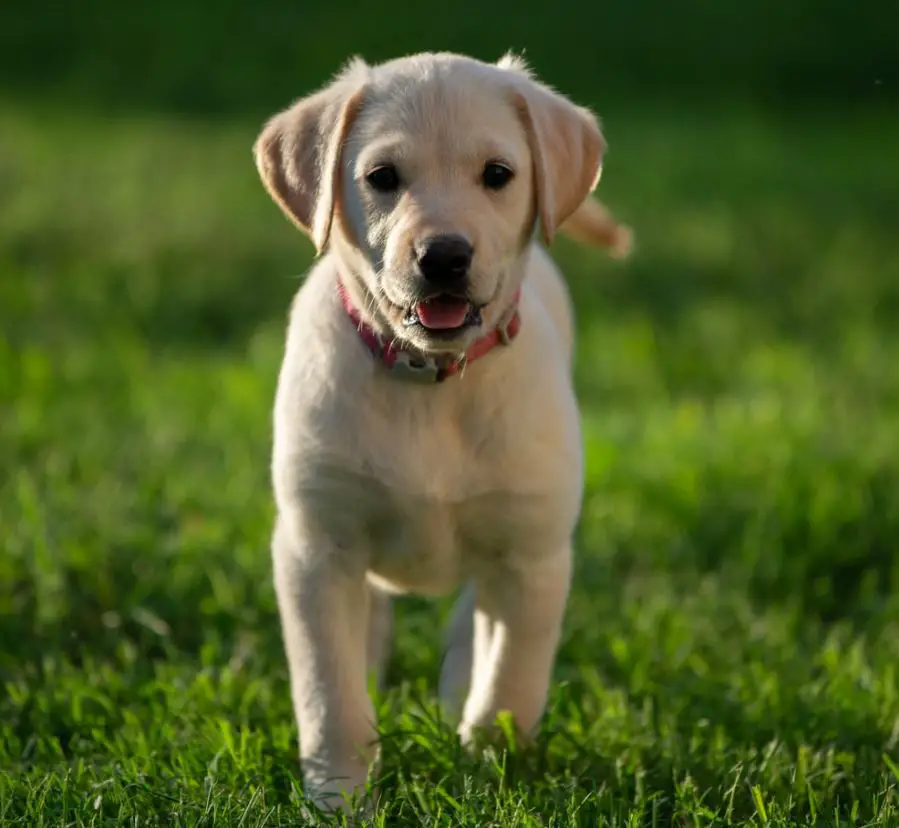
Health issues
One of a Labrador’s health problems is their ears. Because the ears hang, ear infections can be a problem. So you need to clean and inspect his ears regularly. Especially after a romp through the woods or having been in the water.
If you notice dirt in his ears, they need to be cleaned. Take a cotton ball wetted with a dog cleaning ear solution. Gently wipe the ear part you can see, don’t go into the ear canal. If you see there’s a build-up in his ear, then you should consult your vet.
Labrador Retrievers can have other health issues: Hip Dysplasia, Laryngeal Paralysis, Arthritis, Hypothyroidism, Elbow Dysplasia, Seizures, and Cancer. This is why it’s essential to check the health certificates of both parents when purchasing your dog from a breeder.
What About?
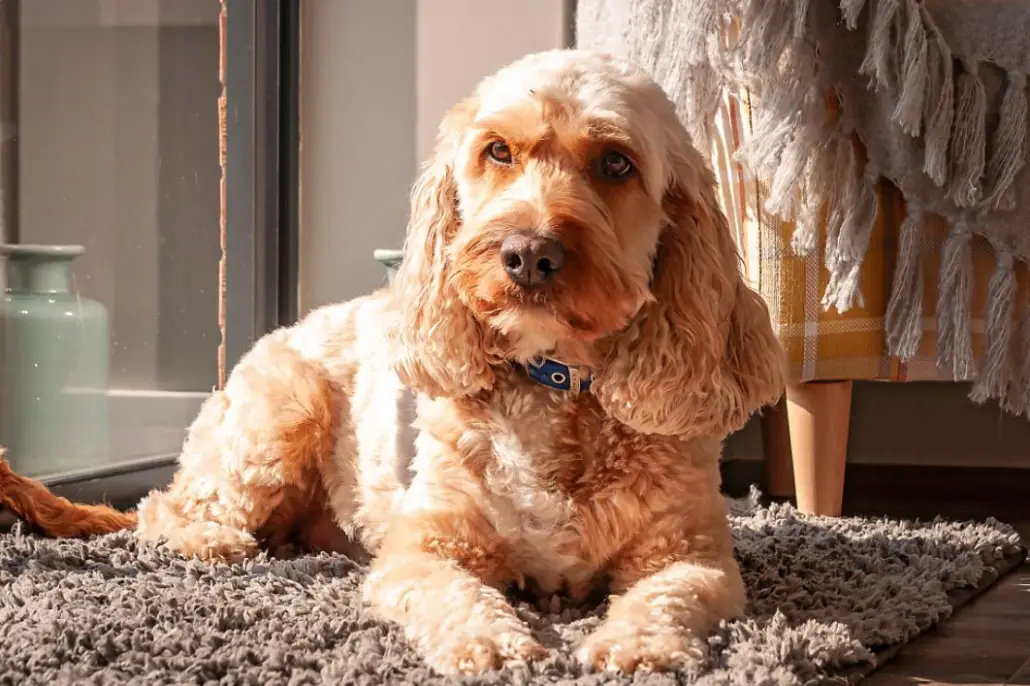
Temperament and behavior
Cockapoos are affectionate and friendly dogs with a comedic personality. They are highly intelligent and love learning new activities. These dogs love to be around their family and are the better dogs for younger children since they are larger and sturdier.
You can’t leave these dogs alone for long periods of time. If left alone too long, the dog will act out by barking and even becoming destructive.
Exercise needs:
These dogs will adapt to apartment living if he is adequately exercised. But the ideal home is a house with a small fenced-in yard. Your dog will need at least 40 minutes of a high level of exercise a day. A good play session in the yard will take care of that.
Guard dog or Family
The Cockapoo is not a guard dog but will bark if he sees someone coming towards the house or knocking at the door.
Training & behavior
A Cockapoo is a little easier to train because one of the parents is a Cocker Spaniel. So, your dog may pick up training and commands a little faster. But it may be a bit of a struggle to get your dog to focus on the lesson. Again, it’s because your dog is hyper-social and loves to be around other animals and people.
This dog is bred to be a companion dog, not to be left outside or left alone too long. Excessive barking and destructive behavior can be caused by too long separation time.
Crating this breed is a benefit that can ensure your pup doesn’t have accidents in the home. Plus, it can be his safe place to get away from noise and confusion if your dog wants to take a nap.
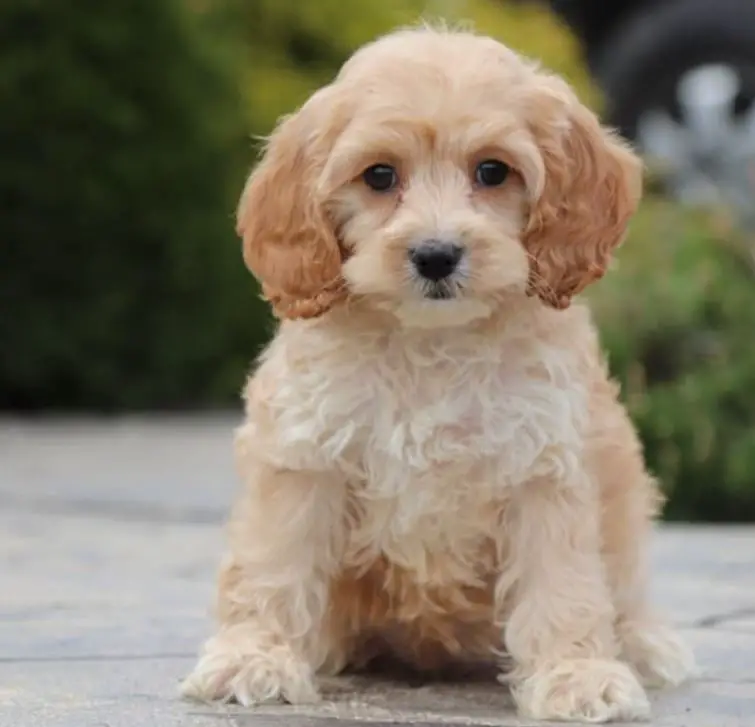
Quick facts
- The American Cockapoo Club of America was created in 1999. It was formed so that there would be a breed standard for Cockapoos.
- Cockapoos love being with their family and can develop separation anxiety if not socialized properly.
- If your Cockapoos coat is extra curly, it may require daily brushing plus a trip to the groomers regularly.
- The cost of a Cockapoo puppy can range from $600 to $2000.
What About?

Temperament & Behaviour
These are great family dogs who do well when their exercise needs are met. Because these dogs are working dogs, they love to have a job to do. Throwing balls or toys and having your dog retrieve them back to you is one way to get the needed exercise.
This is a natural exuberant breed of dog good with children and other pets. However, they are physically strong dogs. Unless appropriately trained, you will find yourself being drug down the street when taking your dog for a walk.
Chewing can be an issue because the retrieving urge gives these dogs a chewing fixation. Training, exercise, and sturdy chew toys will help combat this behavior.
Exercise Needs
These dogs need a lot of exercise, or they will turn into a couch potato. Labradors need to be walked for about 40 to 60 minutes a day plus yard time.
Training & behavior
Your dog is intelligent and will train reasonably quickly because he loves working with his owner. However, these dogs are easy keepers and can become overweight if not kept on a diet.
Labradors don’t like an irregular daily routine, a household that’s noisy all the time, or frequent guest visits. As a result, they are a bit more sensitive to their surroundings than other dog breeds.
The reward training method works best with this breed.
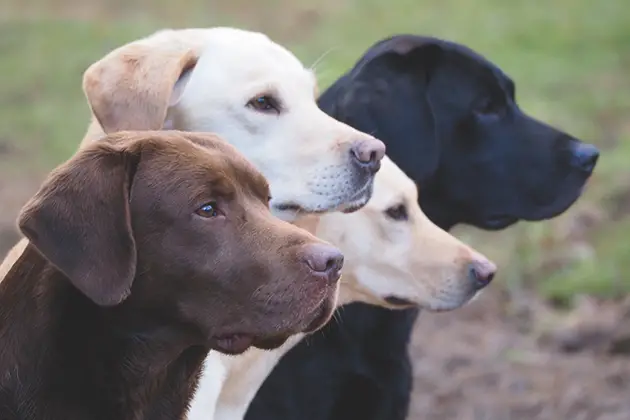
Quick facts
- Labs will tend to “mouth” people, and the quickest solution is to put something in his mouth to carry around.
- These dogs have a strong attraction to water. They will jump into pools, ponds, or puddles. Wherever there is water, that is where they will be.
- This breed isn’t barkers, but they will alert you if someone is at the door.


